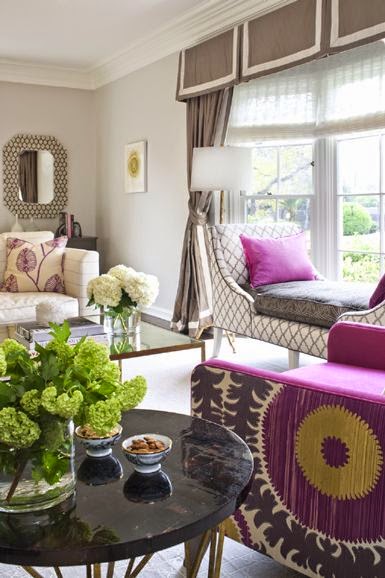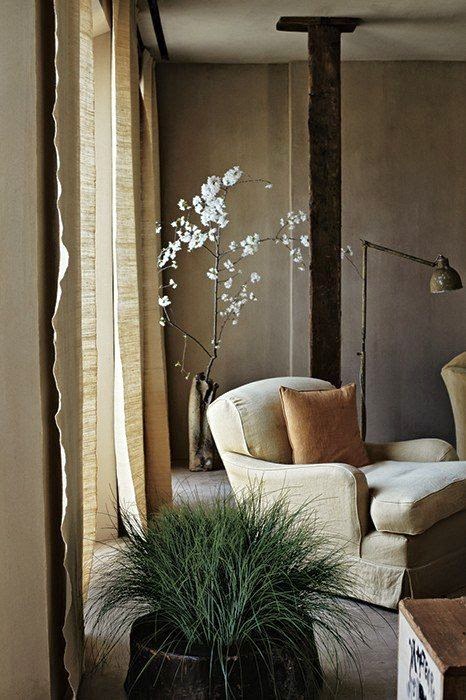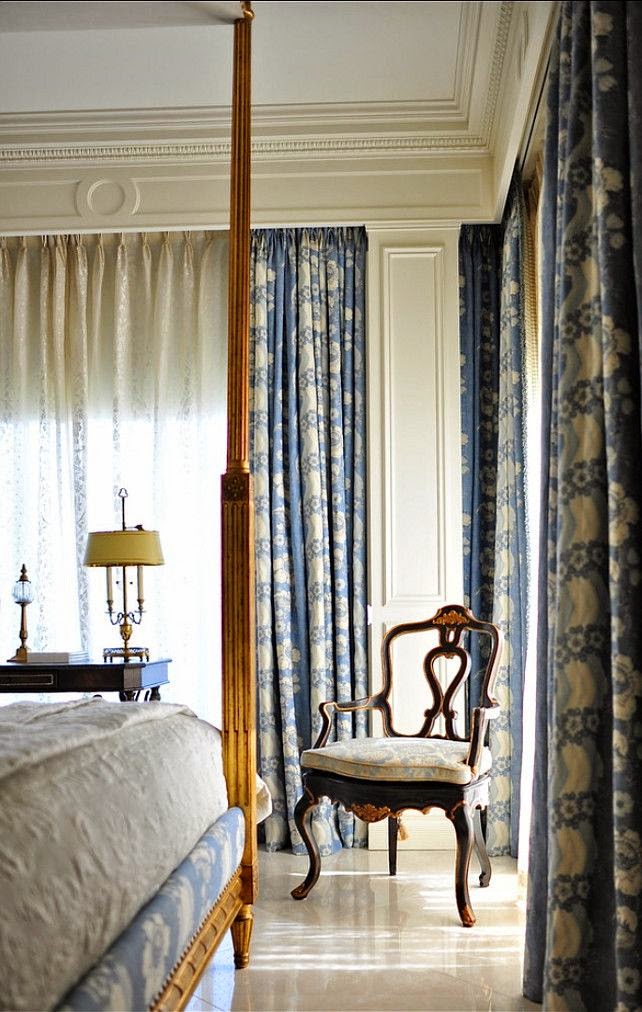Window Treatments 101: Seven Things to Think About when Designing and Ordering Curtains
joy of nesting
something you’re contemplating in the near future, there are several things to consider before making the giant leap. Here is a primer to help
you make decisions that are right for your individual needs and circumstances.
to think about in planning new window treatments: exposure to heat and cold, the
views from your windows, your architectural style, window size and type, cost,
upkeep, and obstacles. Because window treatments are a large investment, there
are a few questions you will need to ask yourself before making decisions.
stages? If so, consider doing the formal living room, dining room, entry,
and master bedroom first, with family room, kitchen, guest rooms and baths as
second priorities. Are your windows attractive and are the views pleasing? Then
you probably don’t want them covered up with wooden blinds or shutters. Are the
clearances tight? In other words is there minimal room for treatments and
hardware? If yes, an interior mounted treatment might be in order. Are there
French doors or glass sliding doors? Generally speaking, the best treatments for those two
situations are draperies.
window treatments. Often times there are more than one style of window in a
room requiring continuity within different functions. I often suggest box
pleated valances or drapery panels for such contingencies because they allow
for varying heights of windows. Layering treatments isn’t always the most cost
efficient choice but for small windows like those found in most bedrooms a
valance over drapery panels visually increases the window size, softens noise,
and creates a restful and attractive appearance.
generally lean toward custom draperies on high quality rods with rings and
finials over sheers; custom box pleated board mounted valances; roman shades; wood
shutters; wooden blinds; and woven shades.
home buyers are attracted to the views.
In these cases a “less is more” approach is used, mounting the
treatments as far off the glass as possible. This approach is a tricky though because
the farther you move the drapery panel off the glass, the wider the panel
“stack” becomes. So while you expose as much glass as possible, you still end
up with more of a “stack”.
windows and views, wooden shutters are a lovely solution. They are always a
good investment for resale value. They are versatile, tailored and relatively easy to maintain.
dark I have found sheers on custom iron rods and rings to be beautiful and
functional. The custom iron keeps them from screaming “budget”. Iron rods are a
lifetime investment and should reflect the architectural style of the home.
on traverse rods; board mounted valances; some brands of woven shades.
on decorative traverse rods over sheers; valances over stationary drapery panels; roman shades;
wooden blinds; valances over wooden blinds.
treatments such as valances over draperies over sheers; wood Plantation shutters.
treatment prices on shutters and blinds wait for annual sales or choose small, lesser known
manufacturers. To lower costs on fabric treatments like draperies,
shades, and valances aim for fabrics in the $50 to 70 per yard range. Trims such as
custom welts, ties, banding, and fringe add to the overall cost. You can save a little by purchasing ready made welts, though the look isn’t quite as “custom”.
Most designers won’t
work with fabric you have purchased elsewhere, preferring instead to
provide you with the fabric themselves. There are many reasons for this:
There is huge liability when using the client’s own fabric not to mention extra foot work.
When we order fabrics from our own sources they automatically ship
them directly to our workrooms.
Frequently fabric has flaws. Because we have long standing relationships with our fabric sources, we have recourse and are provided immediate replacement at no additional cost.
Often times
there isn’t enough fabric to complete a job when client’s order their own fabric and this creates all sorts of problems. Say for instance you have 75 yards of fabric and you discover you need 85 yards. If the fabric is no longer available you won’t be able to complete the job. Experienced designer’s foresee these things “before” ordering.
Ultimately, it is necessary for designers as business people to have the built in profit from purchasing their fabrics at wholesale and selling them at retail in order to cover the myriad contingencies inherent in window treatment designing.
consuming and technically challenging. For that reason the mark-up we receive
from purchasing fabric at wholesale and selling at retail is important to cover
our time. However there are fabric store chains in most major cities that will
sell you the fabric and fabricate the product saving you considerable money.
The draw backs are that workmanship isn’t always great and the styles tend to
date very quickly. If you know what you want and wish to be the designer yourself,
hiring an experienced seamstress is a great option. They are usually willing to
work with your own material too. Choose seamstresses that have at least 15
years of experience otherwise you won’t be happy with the end result.
blinds, or shades pay attention to the colors. On large surfaces white can be
so stark it makes everything else in the room appear dingy. To play it safe with fabric treatments, choose a nicely textured, neutral
colored fabric like warm white or light taupe. Or, be brave and choose a
subtle print that will coordinate well with existing furnishings.















